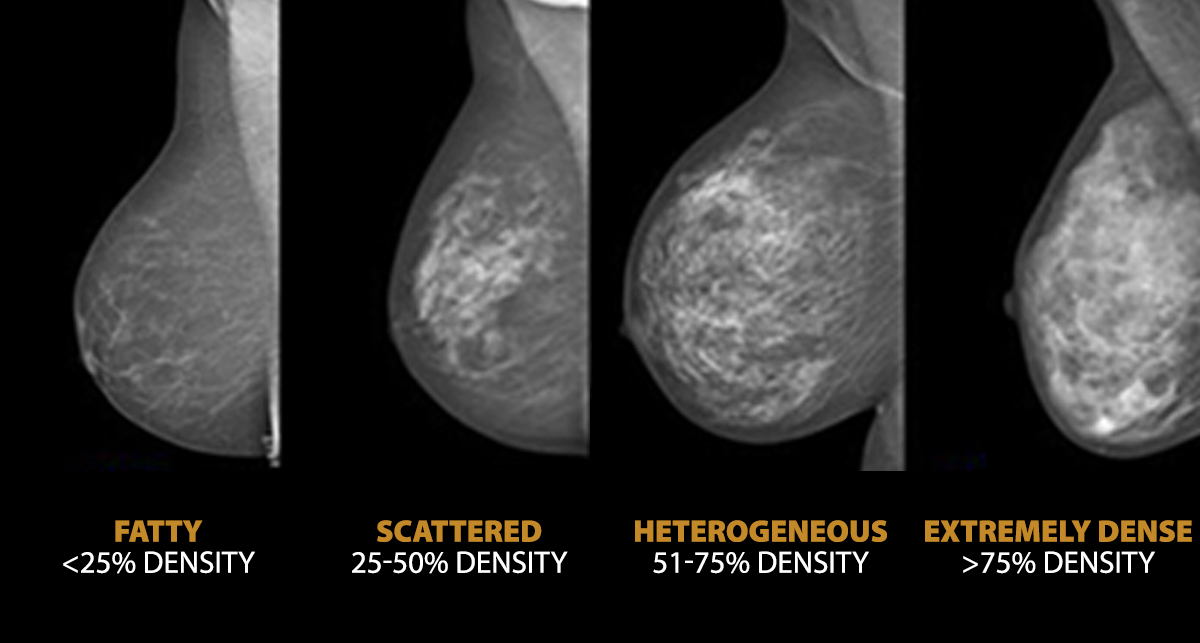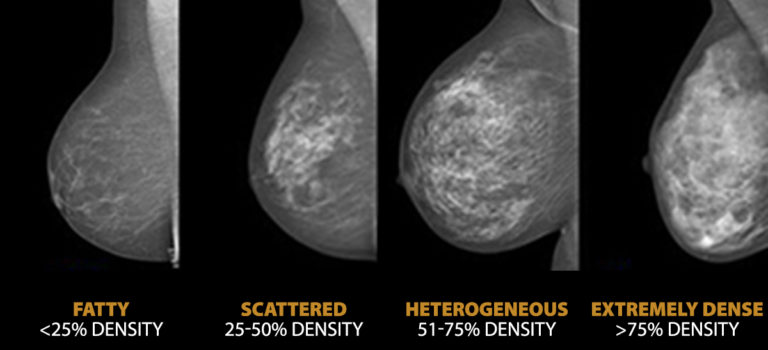By Dr. Mary Christian, breast cancer surgeon
If you have had a mammogram in the last few years, you have noted that in addition to receiving a copy of your report, you also received a letter regarding your breast density.
You have received both of these because of the Monica Landry Helo Early Detection Act passed by the Louisiana legislature in 2015. Louisiana now requires that women be notified of their breast density. So the question is, does it matter?
Breast density is calculated at the time of your mammogram. At one time, this was mostly done by the radiologist “eyeballing it.” Now it is done by mathematic calculation. There are four breast density categories:
- Fatty: The breasts are entirely fatty. About 10 percent of women have this density. These women have lower than average risk of breast cancer.
- Scattered Fibroglandular: There are scattered areas of density, but most abnormal areas are easily visible. About 43 percent of women have this density. These women have average risk of breast cancer.
- Heterogenously dense: The breasts are dense, this may obscure small masses. About 39 percent of women have this density. These women have slightly increased risk of breast cancer – about the same increase as women who started their periods before age 12, women who are overweight, or women who use alcohol regularly.
- Extremely dense: The breasts are VERY dense, and this may mask abnormal areas. If there is cancer, this type of density makes it less like to find in the mammogram. About 8 percent of women have this density. These women have some increased risk – about the same as women whose mother had breast cancer before age 50.

So, why do women with dense breasts have higher rates of breast cancer? They have more of the milk gland and tube system tissue where cancers start.

The real question is what do women with dense breasts need to do since breast density cannot be changed?
- You can have additional tests like a 3D mammogram. If you have additional risk factors in addition to increased breast density, you could have whole breast screening sonograms or an MRI.
- You can decrease your risk of breast cancer by
- exercising
- losing weight
- quitting smoking
- drinking limited alcohol
- not taking hormones
You can be assured that while increased density does increase the risk of breast cancer, it does NOT increase the risk of death from breast cancer. So be aware of your breast density, but not afraid of it!

